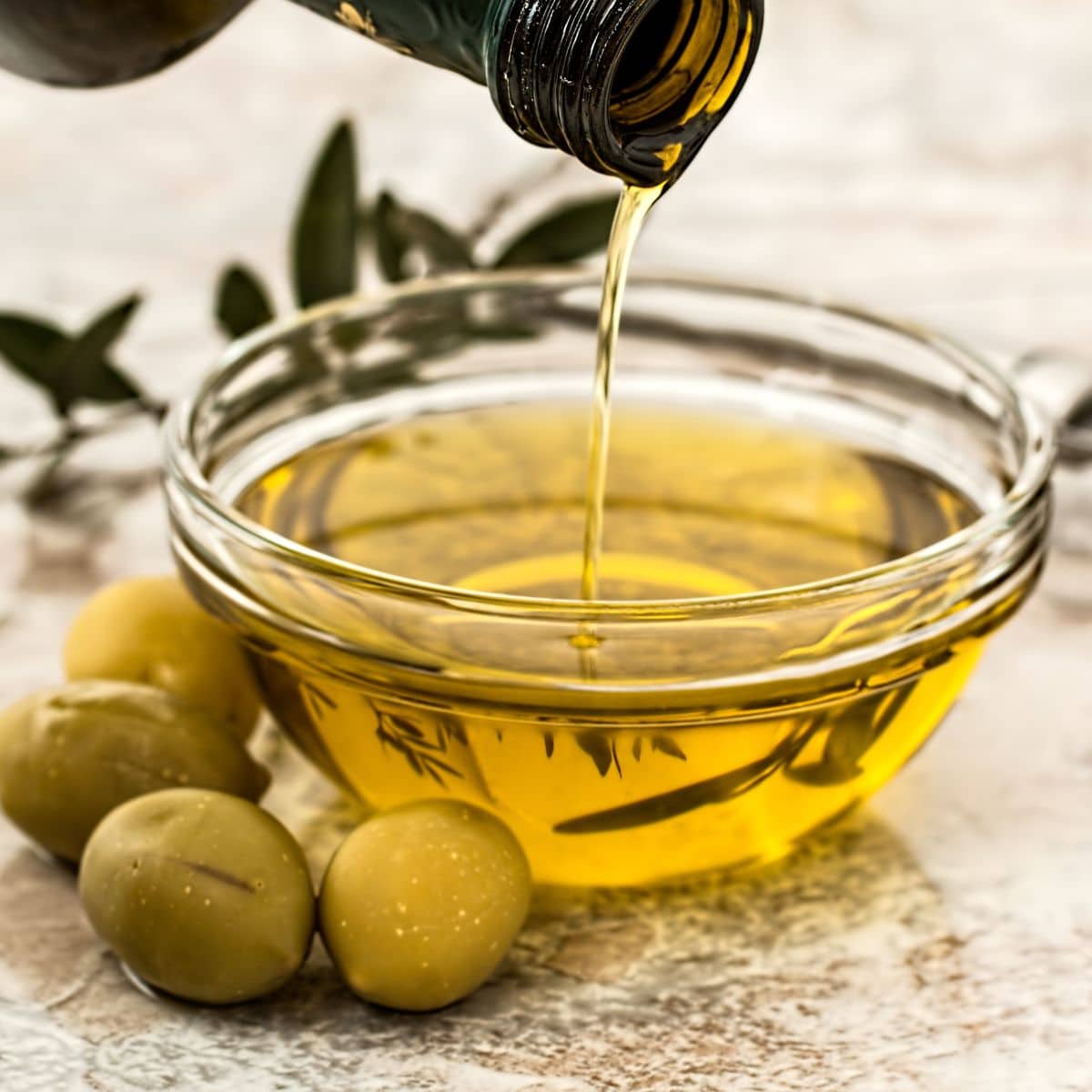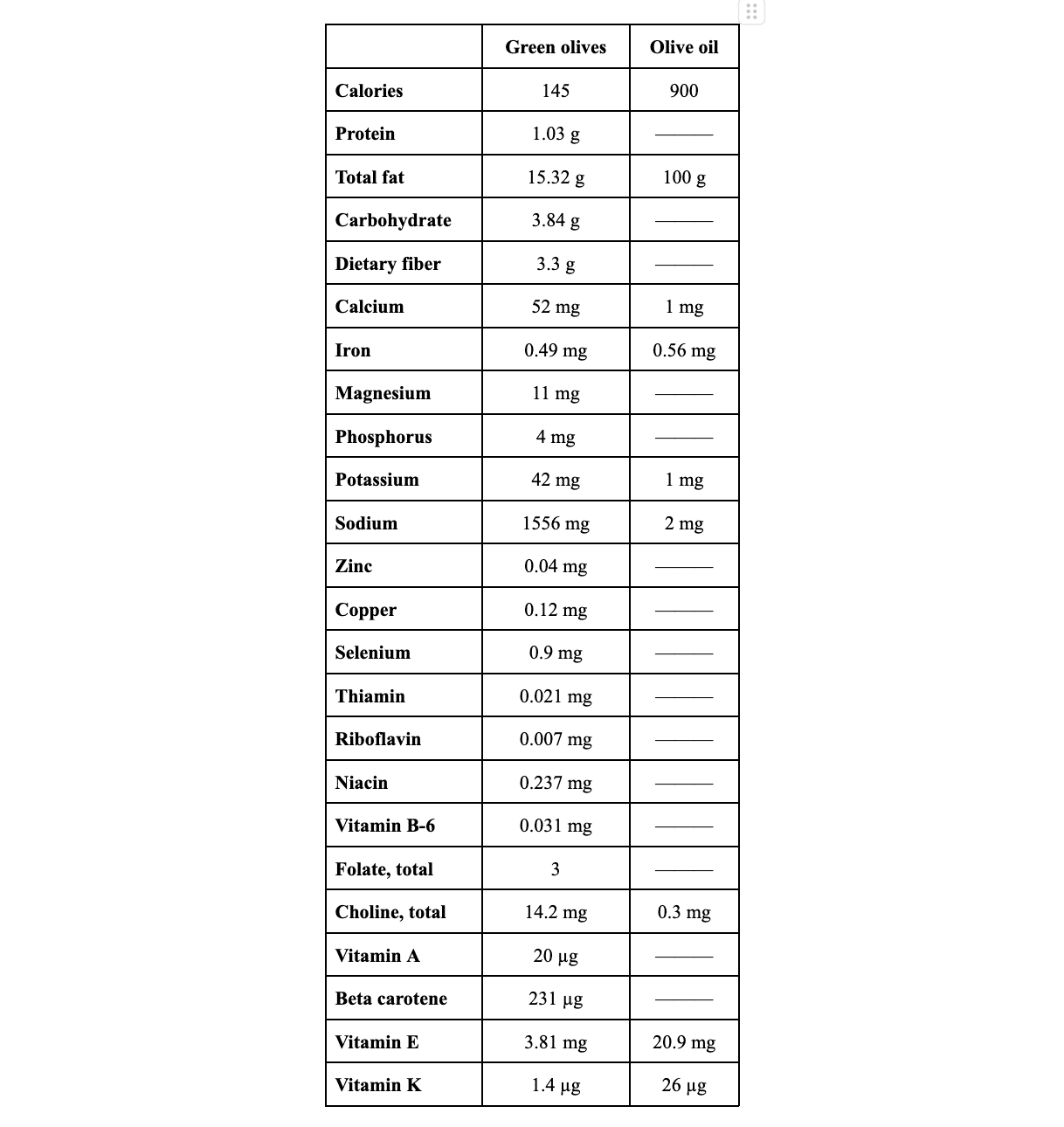

Mainstream nutrition information offers conflicting views on the effects of dietary oils. With outlets like Harvard Health advising that you choose oils high in polyunsaturated fatty acids (PUFAs) instead of saturated fat and numerous claims and studies citing olive oil’s purported ability to lower heart disease risk, it may seem unusual or even extreme to recommend eliminating all oil as part of a healthy eating pattern.[1][2] But this is exactly what we recommend as part of a whole food, plant-based (WFPB) lifestyle: Leave extracted oils out of the kitchen with animal products and other processed foods. Choose whole foods instead.
T. Colin Campbell, PhD, discusses this subject in depth in The Future of Nutrition:[3]
First, a brief overview: Saturated fat, solid at room temperature, is generally associated with animal foods, and unsaturated fat, liquid at room temperature, is associated with plant foods. But this is a simplistic distinction. The truth is that foods contain both saturated and unsaturated fatty acids, the second of which divides further into the categories of monounsaturated and polyunsaturated fatty acids. It’s true that plants, apart from coconuts, tend to have a much higher proportion of unsaturated fatty acids than animal foods, but we shouldn’t leap to vilify saturated fat.
Dr. Campbell argues that the association between saturated fat and disease should instead be interpreted as an association between animal protein and disease:
Whereas the mechanism by which saturated fat might initiate disease formation remains unclear, numerous mechanisms link animal protein consumption to increased disease: free radical oxidation, growth hormone activities, etc. “And critically,” Dr. Campbell concludes, “unlike saturated fat, animal protein cannot be removed from animal foods.” In other words, although saturated fat is highly correlated with animal protein, if our focus is only on the fat, we neglect to address the far more significant problem in our dietary pattern—the overconsumption of animal foods. Focusing only on fat, we might even make the mistake of increasing our animal protein intake.
Finally, we must remember that nutrients do not behave the same in whole foods as when isolated. The healthful properties of fatty plant foods like nuts, seeds, and avocados cannot be obtained by consuming only their extracted and highly concentrated oils. When we eat the oil, we strip away much of the good stuff.

Compared to whole foods, oil has a significantly higher caloric density on average.[4]
Aside from omega-3 and omega-6 fatty acids, few nutrients are present in oil except for vitamin E and vitamin K. Consider the difference between 100 grams of green olives versus olive oil:[5][6]

High sodium content aside—a challenge that does not apply to other plant foods as much as to olives, which require sodium for preservation—there is no question that whole plants provide a much better balance of nutrients than their corresponding oils. (Incidentally, you can get plenty of vitamin E from nuts and seeds, and vitamin K from green leafy vegetables)
High-fat foods, including oils, elicit an intense reaction from your body and brain, which can contribute to their apparent addictive qualities.[7] You may experience a pleasure spike when eating oily foods, but what follows is far from healthy for your body. The damage of a high-fat meal sets in quickly:[8]
We have already touched on one of the most important considerations, but it’s worth repeating for emphasis. As a species, we have been hardwired to seek out calorie-dense foods for evolutionary purposes. Throughout most of human history, calories have been in short supply, so our brains developed a very impressive survival mechanism: When we eat food of a greater caloric density, our brains release a higher concentration of dopamine and natural opiates. In just the past few decades in wealthier countries, the food supply has become not only more abundant but also laden with manufactured foods that hijack our survival instincts. (Learn more about the dietary pleasure trap.)
You have most likely heard claims about the health benefits of certain oils. Much of this evidence is based on less-than-ideal comparisons. Oils containing more anti-inflammatory omega-3 fatty acids are likely to appear less damaging than trans fats or foods with a higher proportion of pro-inflammatory omega-6 fats, but that does not mean they are healthy. Indeed, data show that all oils impair endothelial function to various degrees.[9] (Learn more about omega-3:omega-6 fatty acids.)
This is true even of cold-pressed oils, the purported health benefits of which may be due to the lack of heat or chemicals used in processing.[10] By comparison, the expeller pressing process creates heat from friction—because unsaturated fats become unstable at high temperatures, oils exposed to heat could have more free radicals and, thus, cause more cellular damage when ingested—and other oils are extracted using solvents the residues of which may appear in trace amounts in the final product.[11]
But as we have already established, the downsides of consuming oil go far beyond the heat from processing or the possibility of consuming trace amounts of solvents. Even if these two concerns could be eliminated, as in cold-pressed oils, we are essentially left with a nutrient-deficient but calorically replete food fragment.

We all need some fat in our diets to help absorb fat-soluble nutrients and maintain cellular health, but the amount is not nearly as much as most people consume. As of 2007, the average American over two years old was taking in around 79 grams of fat per day, which equates to 35.6 percent of calories from fat on a 2,000-calorie diet.[12] The WFPB lifestyle, on the other hand, keeps fat intake between 10–15 percent; total fat needs differ depending on age, activity level, and health status, but in general, the standard American diet contains far more than we need.
We certainly do not need to fret about getting enough fat, even on an oil-free diet. There are many tasty ways to get healthy plant-based fats:
One of the most important adjustments for most people is in the kitchen: If you have never cooked without oil before, it can take some getting used to. Fear not, though. With practice, you will see that you can adapt many of your favorite recipes and cooking methods to an oil-free lifestyle. Try these simple tips to remove oil without losing flavor:
Experiment until you find your favorite methods, and you won’t miss the greasy, heavy feeling of oil. Your heart, gut, and taste buds will thank you for it. (For more on cooking without oil, check out our beginner’s course on WFPB cooking.)
Copyright 2026 Center for Nutrition Studies. All rights reserved.